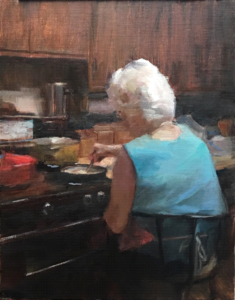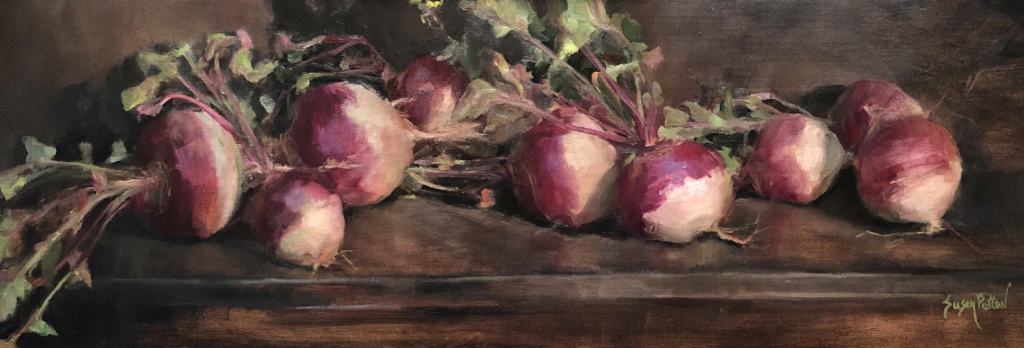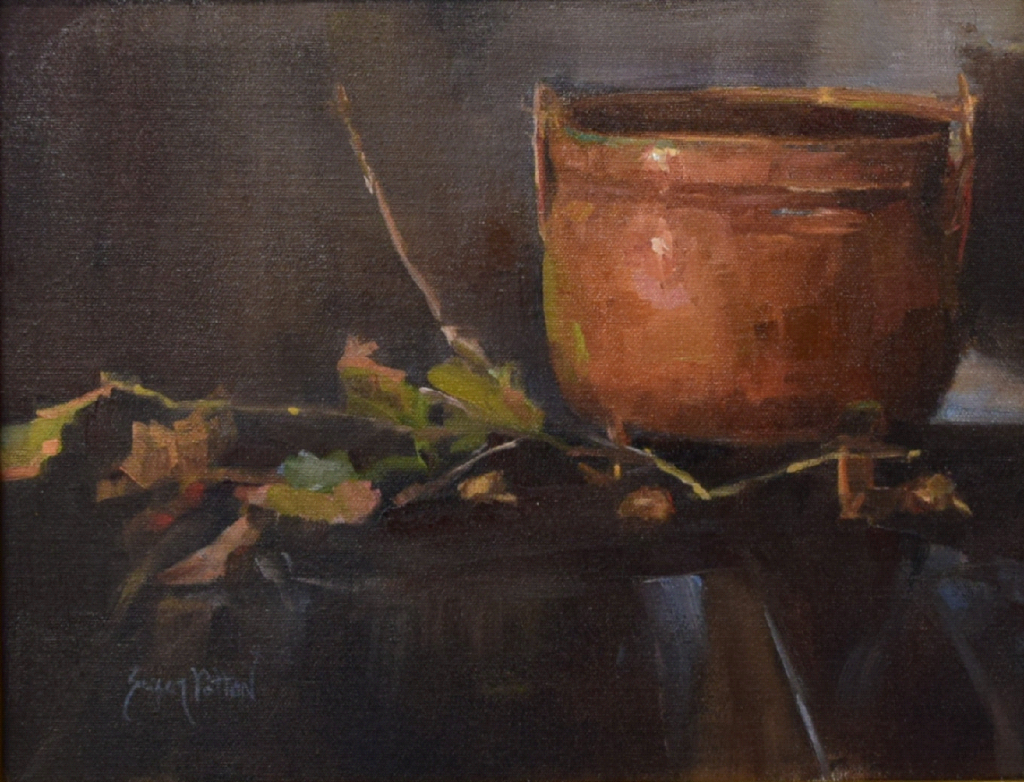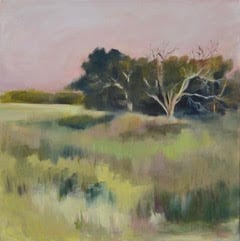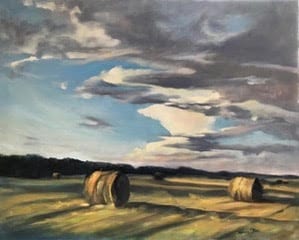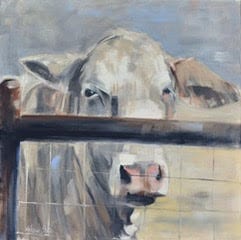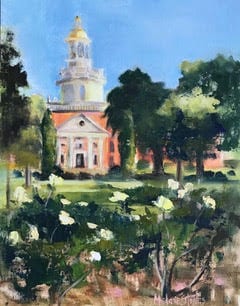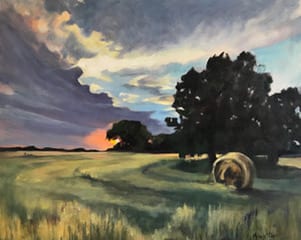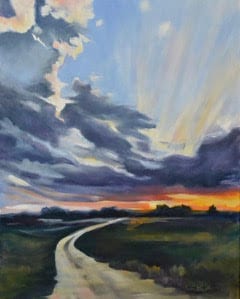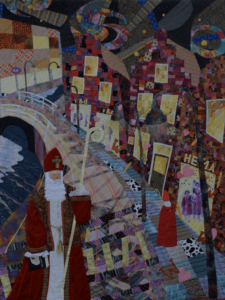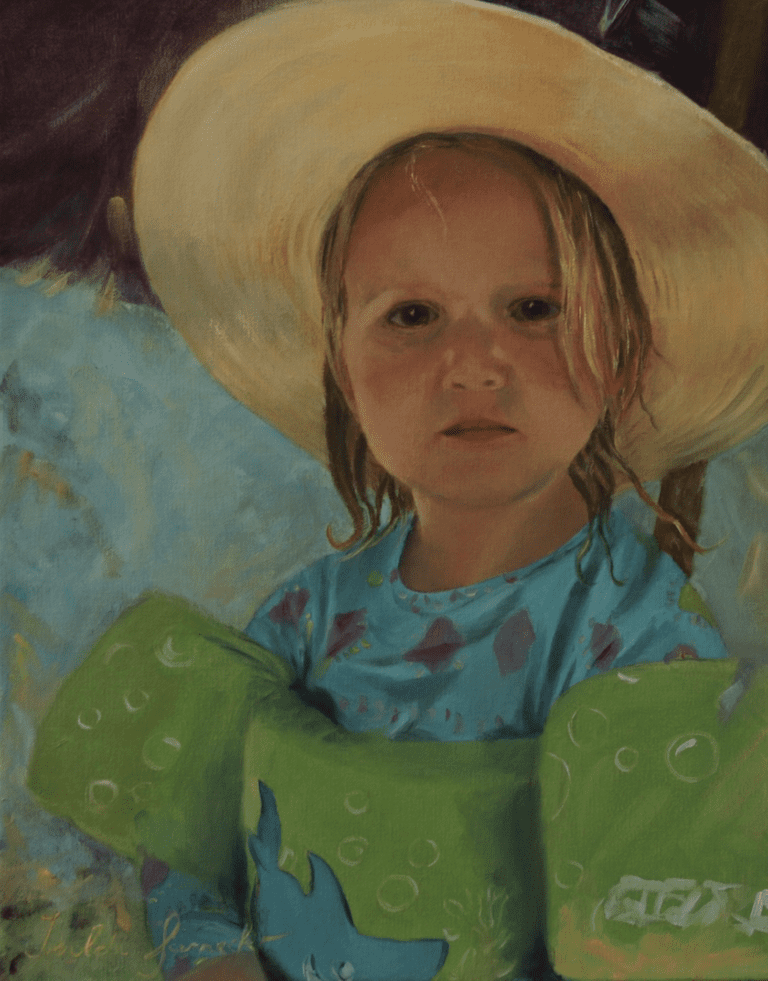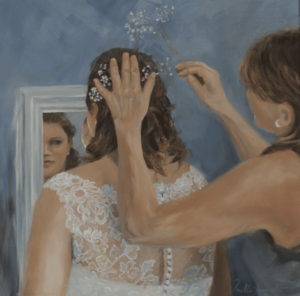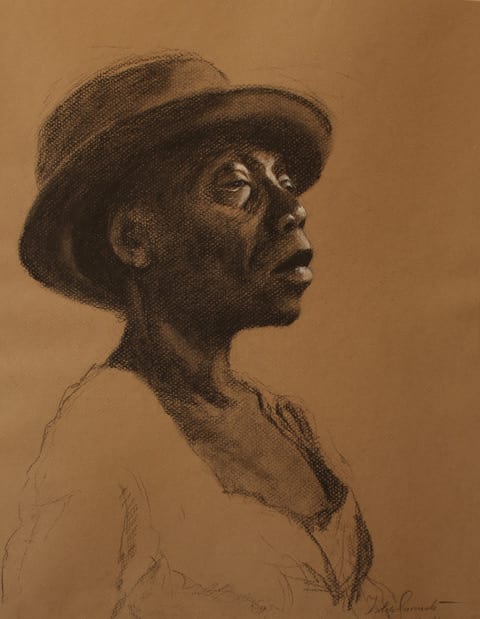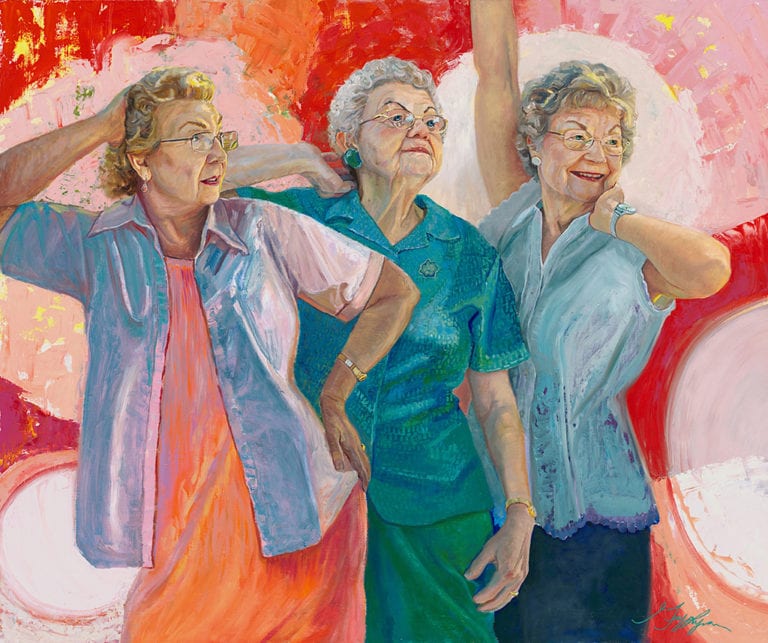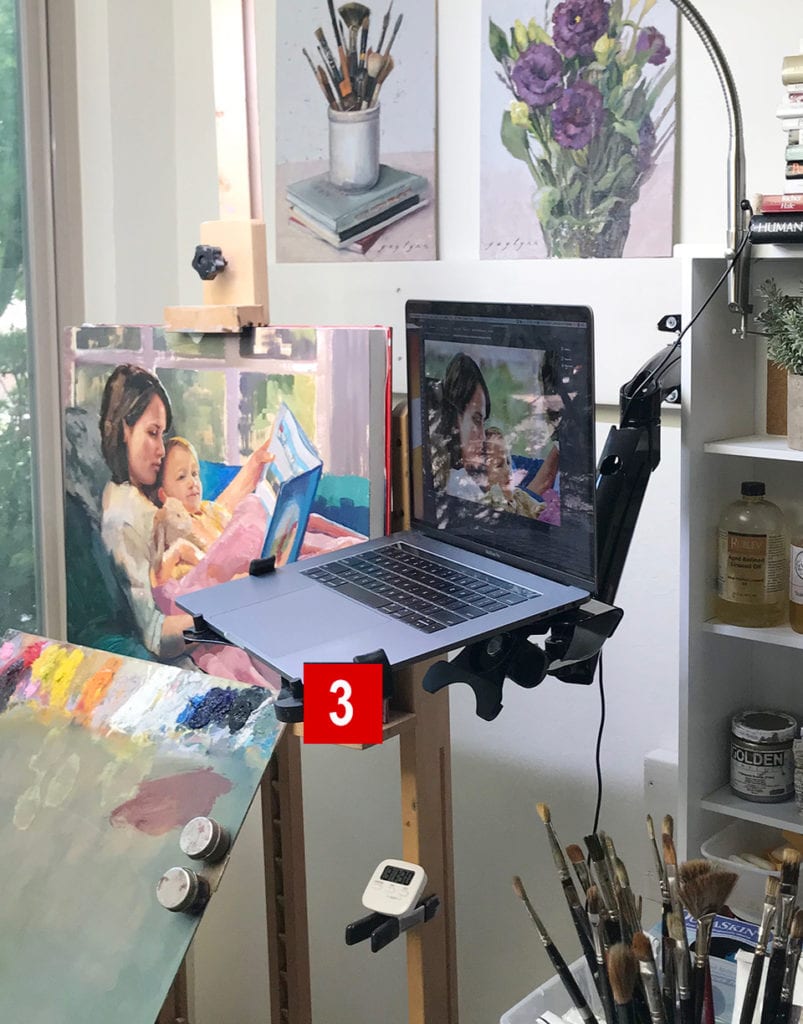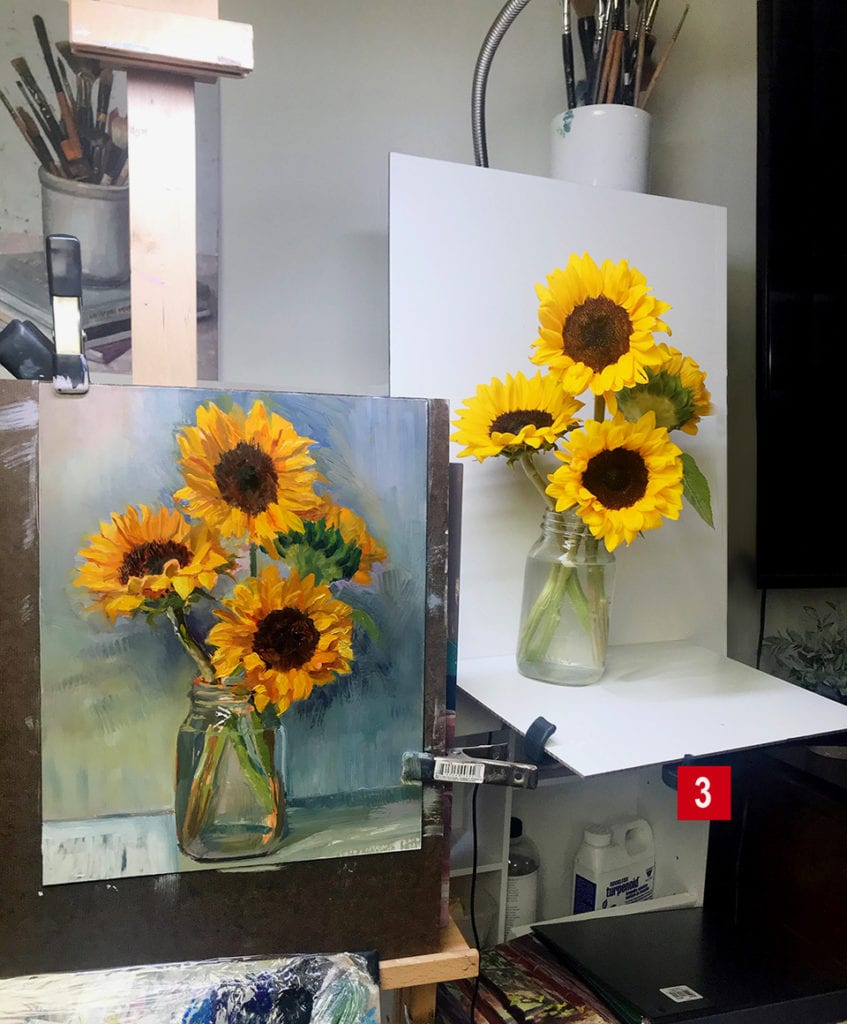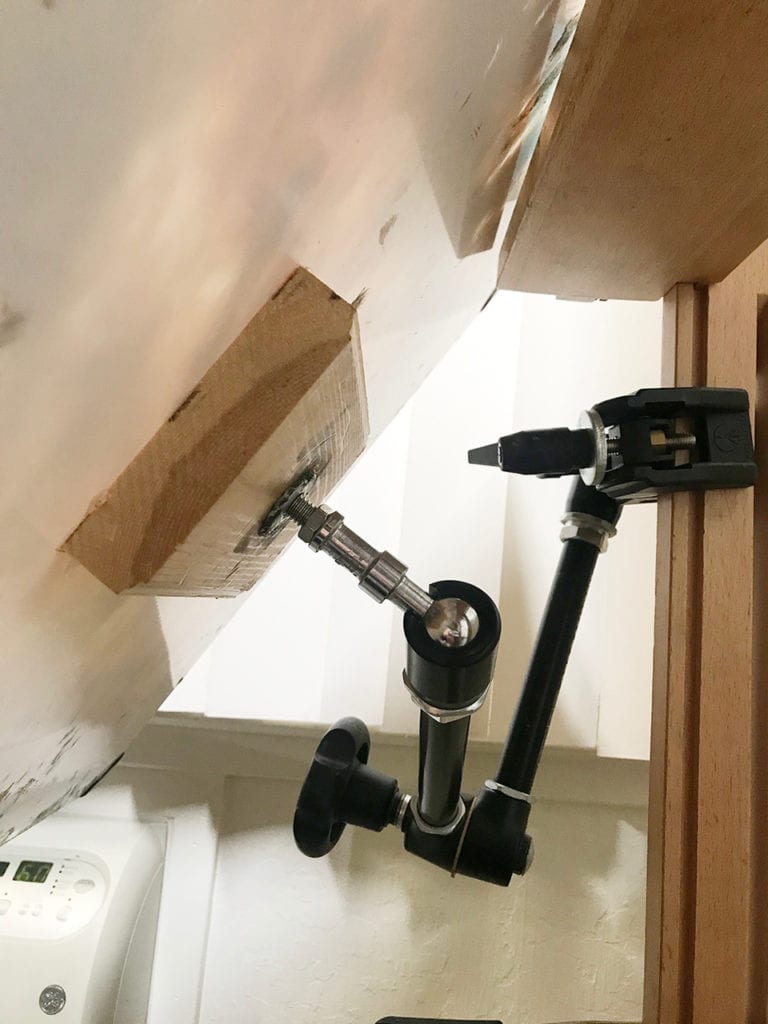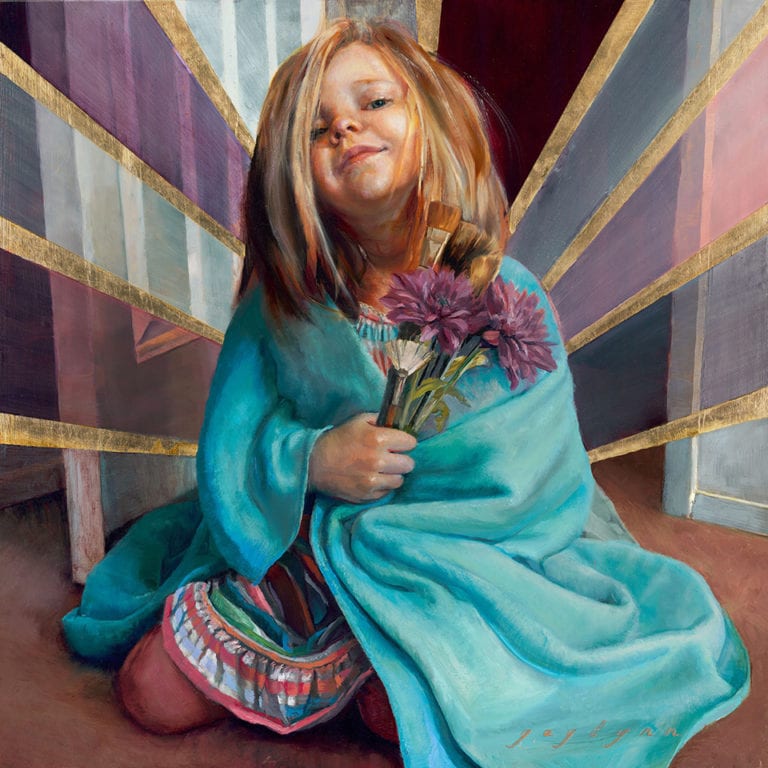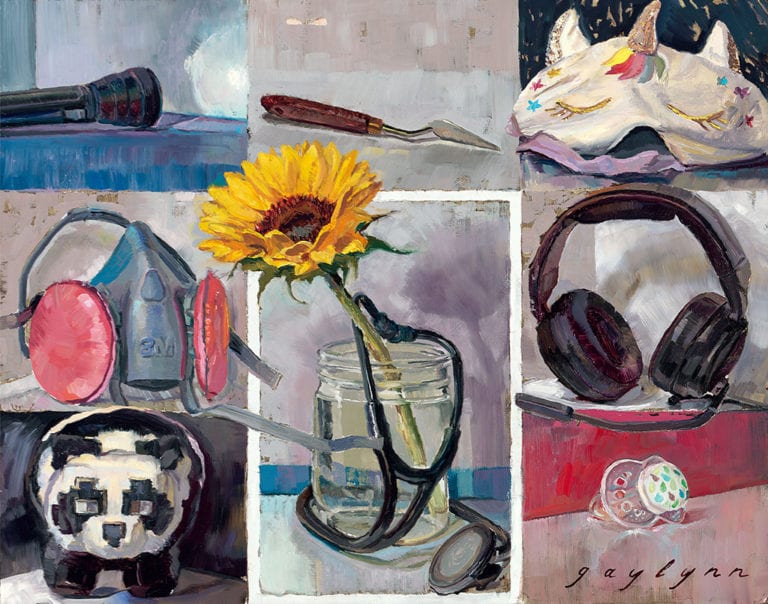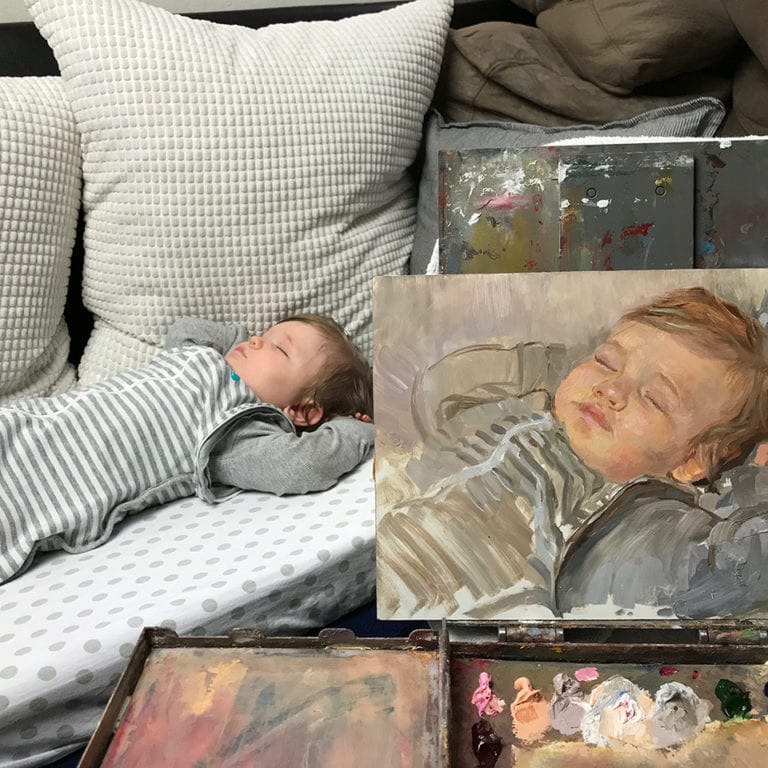The year 2020 started off like most years with back-to-back plans for travel to events, shows and other painting adventures. Then COVID 19 hit and we slammed on the brakes of our planned lives. All our friends we planned on painting with, and workshops we planned on teaching were suddenly stripped out of our schedules, our lives. Talk about change! A 360 for sure!
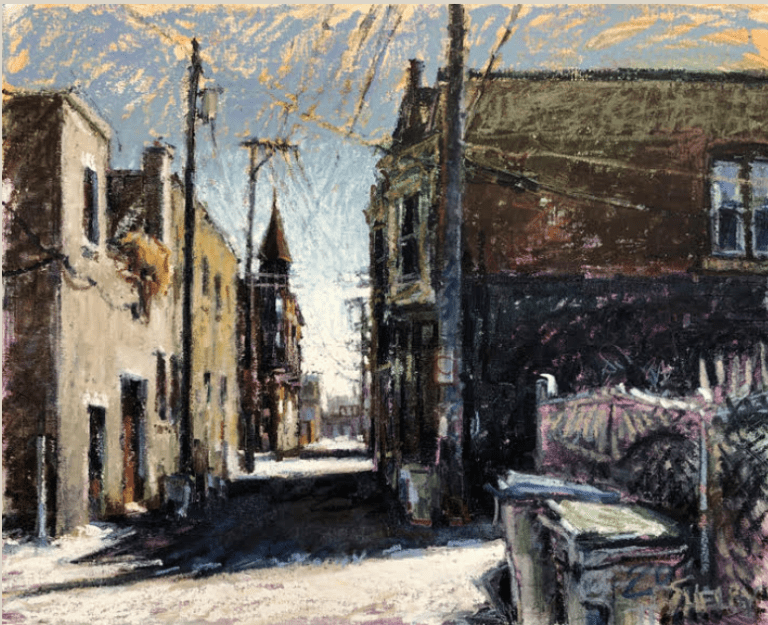
20″ x 24″ – Oil sticks on canvas
At the time I felt a weird comfort knowing that we were all in the “same boat” and couldn’t feel so terribly bad because FOMO (Fear Of Missing Out) wasn’t going to be an issue because we were ALL going to be missing out. So from mid-March through May, the “stay at home” mandate actually created a kind of welcome cocoon in my creative life, when I suddenly had time to make artwork that was experimental and out of my comfort zone. I actually embraced this time and told myself that it won’t last long and that I shouldn’t squander it under any circumstance. So I set to work playing with a new medium: oil sticks. What a fun medium! It was like drawing with big fat crayons that allowed for a lot of interesting mark-making and gestural movement. I managed to be quite productive and was thrilled with all the time available, without deadlines and obligations. It had been years since I had this luxury.
As I interacted with fellow artists online and over the phone I discovered that many of them were not motivated to paint, were seriously stuck, and sometimes downright depressed. I was feeling really lucky that my mood and energy level was good and hoped that I wouldn’t fall into the same dark place. I also felt fortunate that I could leave my small condo and go to my studio to work and didn’t have to isolate in one place. Even so, I reminded myself not to get too comfortable in this level of ok-ness because at any moment, things could change.
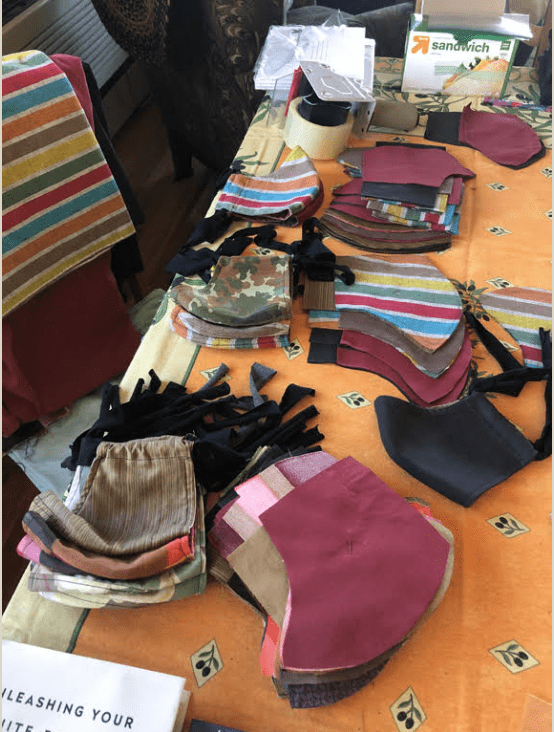
To mitigate my incessant need to keep busy at home while I wasn’t painting, I had the crazy idea to pull out my sewing machine to try my hand at constructing masks. I found a pattern, customized it, and became hooked! Sewing while listening to inspirational teachings became a satisfying tonic–with the side effect of helping others.
Summer in Milwaukee came and isolation didn’t seem so harsh. Being outside kept our moods lifted with lots of exercise and a few safe outdoor activities. I liberated myself by getting in the car and driving to the Southwest to deliver new paintings to galleries and more importantly, to visit a couple painter friends. What a wonderful re-entry into something “normal.” We even did a little plein air painting which felt like a home-coming of sorts. I was in a good place.
Back in Milwaukee, I resumed my mask-making endeavors and was mailing them out to people all over the county. In late summer with the pandemic still an issue, I started getting the “I don’t feel like painting” vibe that I heard about from others. The cocooning attraction had lost its appeal, and the experimental oil stick paintings weren’t getting into shows. I was questioning myself and my work all over again. I didn’t even like going to the studio. My motivation levels were starting to take a dive. At least I did some plein air painting for Door County’s virtual plein air event and enjoyed being outside. But there was something missing that I couldn’t put my finger on. Could it be that cycle of change I warned myself about?
That’s o.k., I’ll just sew some more masks.
In August, a much anticipated trip was about to happen. A wilderness pack trip with llamas carrying all the gear and painting with friends! YAY! The funny thing about that was I had more fun doing little watercolor sketches than actual oil paintings! I just didn’t feel like getting out my oils and setting up the whole sha-blam! I forced myself to do a few little oil studies, because after all, I DID bring ALL that gear with me to 10,000 feet! Again, I questioned myself about why I didn’t want to paint. I tried hard not to compare myself with my ambitious friends who got up at the crack of dawn to paint before breakfast, but I still felt like a lazy imitation of a painter. Realizing the futility of comparisons, I decided to bask in the glories of the Wind River Range of Wyoming and concentrate on taking photos for future painting reference. It was a bucket-list type of trip and just being there was all I really needed.
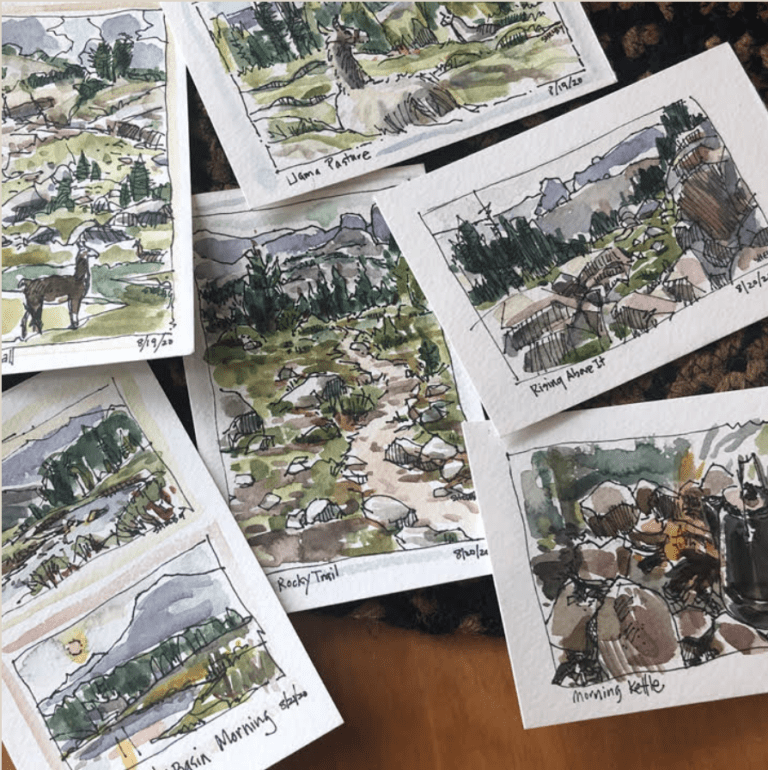
When I got back to Milwaukee after my Wyoming trip, I was excited about making some paintings from those photos. But when I went to pick out images to paint from, I was disappointed by how few of those images were good enough to become paintings. Plus, they were all landscapes—not my cup ‘o tea. Should have thought of that one before!
Mask-making becomes the balm again.
As we close in on colder weather and shorter days, and with the pandemic still keeping us from dining out and gathering with family at the holidays, how will we stay sane and creatively occupied? Maybe find a different creative outlet like learning a new instrument? (I just bought a vintage bass guitar.) Write poetry, do some crafting, rearrange the furniture, redesign a website, remodel a kitchen, do stand-up comedy on Zoom…who knows?

And what about reinvigorating the desire to paint? If you’re like me and you have to make money painting or teaching, you feel a pressure that’s an awful lot like a job. The “wise self” says to just show up, get yourself to the easel and start. Eventually, we gain the momentum and charge forward by the shear act of putting the brush to canvas. Realizing that, I’ve been trying to be kind to myself and less judgmental about not wanting to paint. It’s really ok because everything changes. Even this will change.
So, why masks? Sewing masks or doing anything with your hands is a way of being present to a task with purpose. A task that involves craftsmanship, beauty and function. A task that keeps your hands busy and the mind open at the same time—a fluid state, not unlike a walking meditation. It helps us to embrace the present moment, which is exactly where we need to be.
Maybe tomorrow’s the day I paint that landscape.
